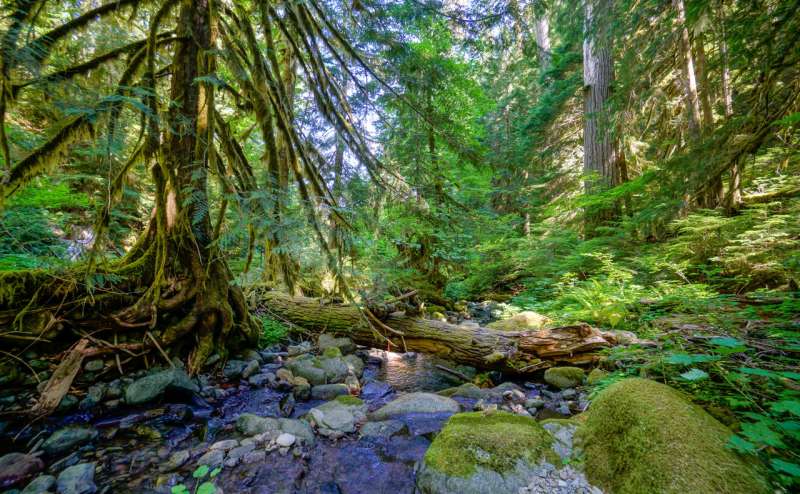PNW woodlands will be less vulnerable to drought, fire than Rocky Mountain, Sierra forests

Forests in the Pacific Northwest will be less vulnerable to drought and fire over the next three decades than those in the Rocky Mountains and Sierra Nevada, computer modeling by researchers in Oregon State University's College of Forestry shows.
The findings, published today in Global Change Biology, represent an important tool for scientists and land managers because woodlands throughout the western United States are under increasing stress from accelerated rates of drought-related mortality related to global, human-caused climate change.
Also, the Northwest's hemlock, Douglas-fir and redwood forests have tremendous potential to counteract climate change via their carbon-sequestration abilities, meaning policies that promote stewardship of those forests is critical, the scientists say.
"Recent prolonged droughts and catastrophic wildfires in the West have raised concerns about forest mortality and how that might impact forest structure and ecosystem services and also the economic vitality of nearby communities," said corresponding author Polly Buotte of OSU's Department of Forest Ecosystems and Society. "Forests in the West support high species diversity and some Pacific Northwest forests are among the highest carbon-density forests on Earth."
Buotte and College of Forestry colleague Beverly Law led a collaboration that modeled 13 different major forest types from around the western United States, taking into account climate conditions and atmospheric carbon dioxide levels over the next 30 years.
The model was high-resolution both from a spatial standpoint—it broke forests into grids of 16 square kilometers—and also because it looked at species-specific responses to environmental variables.
"The model calculated multiple biophysical and biogeochemical processes, including surface heat fluxes, photosynthesis, evaporation, transpiration, carbon allocation to plant tissue, decomposition and nitrogen cycling," Buotte said.
The researchers, who also included David Rupp of OSU's College of Earth, Ocean and Atmospheric Sciences, developed metrics of vulnerability to short-term extreme and prolonged drought.
"Projections show that water?limited forests in the Rockies, the Southwest and the Great Basin will be the most vulnerable to future drought?related mortality," Buotte said. "We expect vulnerability to future fires will be highest in the Sierra Nevada and portions of the Rocky Mountains. Forests along the Pacific coast and western Cascades regions, where there is ample rain, are projected to be the least vulnerable to either drought or fire."
Stress from drought causes trees to shed leaves, limiting their capacity for photosynthesis; insect infestations also make life hard for drought-affected trees.
"Our analyses indicate strong potential for continued levels of drought?related forest mortality in the southern Rockies and in the Southwest in the coming decades as those forests are likely to suffer from a changing climate," Buotte said.
The researchers stress that there is a lot of spatial variability in future vulnerability. And that fire vulnerability is not the same as fire intensity.
"We do not imply that areas labeled highly vulnerable will burn or that if ignited they will burn with high intensity, but they are at greater risk in the coming years than they have been historically," Buotte said.
More information: Polly C. Buotte et al, Near-future forest vulnerability to drought and fire varies across the western United States, Global Change Biology (2018). DOI: 10.1111/gcb.14490
Journal information: Global Change Biology
Provided by Oregon State University





















